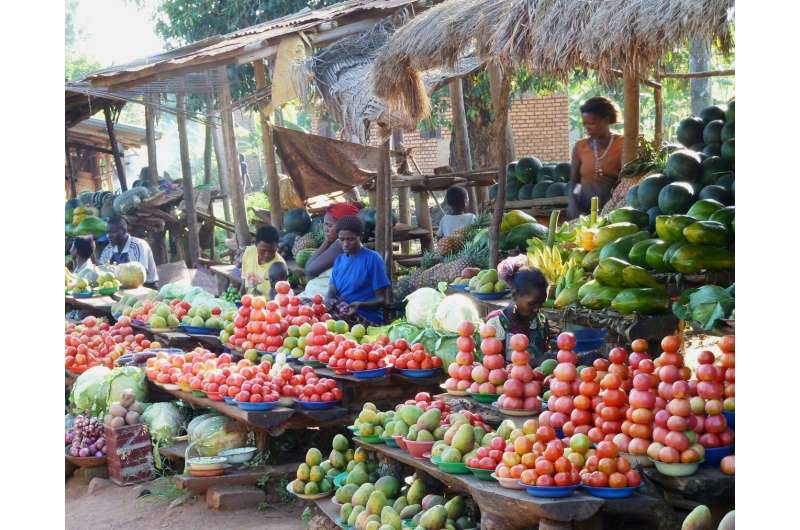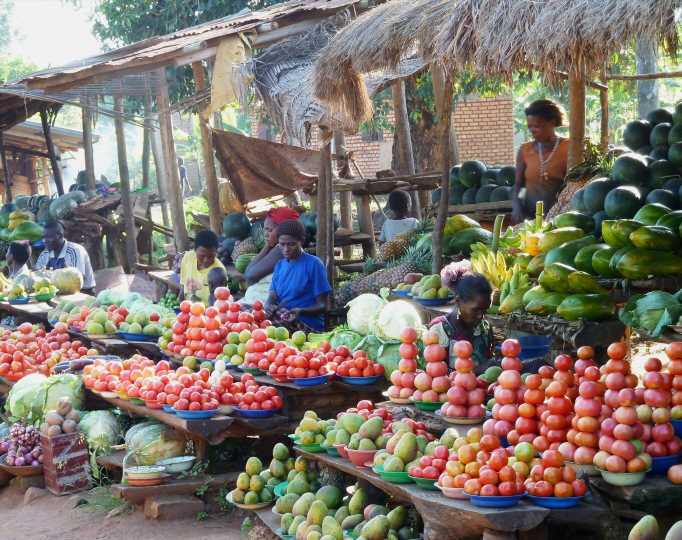
Malnutrition in developing countries is best addressed not by increasing the variety of crops grown on smallholder farms, but by improving access to markets. This is the conclusion of a recent study by the MwAPATA Institute in Malawi and the University of Bonn in Germany. More variety in animal production, however, does show positive effects. The findings are now published in the journal The Lancet Planetary Health.
Too little food and a diet that is too one-sided can have serious negative health consequences. A varied diet is thus an important means of preventing malnutrition. For this reason, researchers are often advocating that smallholders in Africa, who are particularly affected, should grow more diverse crops. As these farms produce to a significant extent for their own consumption, the greater variety in the field should have a positive impact on nutrition. To date, however, there have only been small, regionally limited studies on the actual effects of further farm diversification.
The researchers at the MwAPATA Institute and the University of Bonn have now drawn on a far more comprehensive trove of data: They evaluated surveys conducted by the national statistical offices of Ethiopia, Malawi, Tanzania, and Uganda, in which the same smallholder households had been repeatedly visited and surveyed over several years. The data show the number of crops grown and species of livestock kept. In addition, they provide information on the age, weight and height of children at the family farms. This makes it possible to calculate various indicators of their nutritional status.
Growth of 50,000 children and adolescents evaluated
“In total, we analyzed data from more than 50,000 children and adolescents from over 20,000 randomly selected farms,” explains MwAPATA Institute researcher Dr. Makaiko Khonje. “We linked these measurements to the production diversity of the farms.”
The researchers discovered three important results: First, the number of crops had little effect on children’s growth and thus their nutritional status. A larger variety of animal species kept, however, did have a positive effect. Keeping goats or a cow, perhaps, in addition to chickens and other animals, can therefore improve nutritional status—that is the second message.
The third important result relates to local markets. “Improved market access has a particularly positive impact on nutritional status,” Khonje explains. Because those who can sell their products at the market and in turn purchase the foods that they themselves are lacking can thereby also ensure greater variety on the plate. In many places, however, the appropriate infrastructure is lacking. The roads to the market are often so bad that transport takes a long time and some of the products spoil or are damaged on the way. “If you can’t sell half the food in the end, but have to throw it away, then of course the effort is not worthwhile,” explains Prof. Dr. Matin Qaim from the Center for Development Research (ZEF) at the University of Bonn, who was also involved in the study.
Specialization can be useful, but no monocultures
The researchers recommend not to focus solely on more variety in the field, as in many cases, better market access would be more effective. Too much diversification is also counterproductive, they say, because each plant has its own requirements and thus requires special know-how. “Moreover, not every soil is suitable for every crop,” Khonje points out. “It’s better to focus on the species that do particularly well locally and sell the surplus.”
Source: Read Full Article
